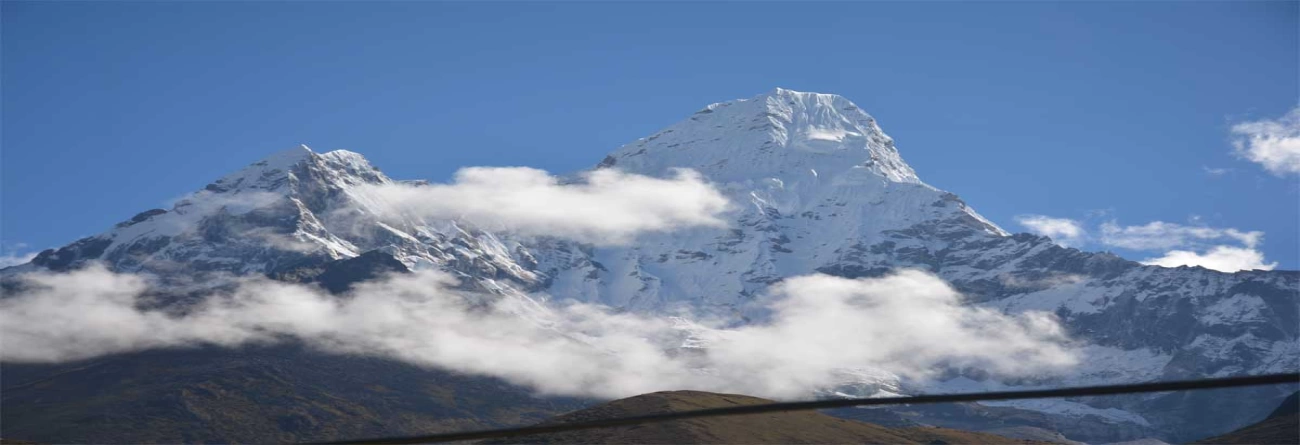Everest Base Camp trek is filled with fascinating places to look. From the world's adventurous airport to the base of the mighty Everest, there lie amazing resting places and local settlements. Some of the worth visiting places in the Everest region are Lukla, Namche Bazar, Dingboche, Tengboche Monastery, Gorekshep, Kalapatthar, etc.
Top 3 Places of Interest in Everest Region
Places to watch during EBC trekTable of Contents
Everest Base Camp trek is considered to be one of the most amazing treks to do. There are lots of interesting places to see in this place.
Lukla:
Since Lukla is the only way to enter the Everest region (there is an alternate route from Jiri that connects directly to Phakding.), it is unavoidable. Housing the world's most adventurous airport, Lukla offers beautiful scenery and various cuisines from different parts of the world.
Lukla is a small town in Pasang Lhamu Village Development Committee of Solukhumbu district in the northeastern part of Nepal. Located at an altitude of 2,860 m from sea level, it is one of the most important places for trekkers and climbers who want to find adventure in the Everest Region. The name Lukla in the local language means ‘lots of sheep and goats but they are rarely seen these days as most of the Sherpa are involved in the tourism industry.
Although Lukla is small, you can feel the excitement of trekkers and climbers either getting ready to set off on their expeditions or finishing off a well-deserved rest after completing a memorable adventure. It is also home to one of the world’s most adventurous airports in the world, Tenzing-Hillary airport which is named after Tenzing Norgay Sherpa and Sir Edmund Hillary, the first people to reach the summit of Mt. Everest.
Although the town is scenic, the views are not guaranteed due to ever-changing weather conditions. The plane may get delayed or even the flights get canceled sometimes so you might be staying there more than you planned. In this blog, we will provide you with some information about Lukla airport, climatic conditions, and things to do.
Tenzing-Hillary Airport:
The first thing people think of when thinking about adventure in the Everest region is the world-famous Tenzin-Hillary airport at Lukla. Built back in 1964 with the help of honorable Sir Edmund Hillary, it is known as the world’s most dangerous airport in the world however, we would call it the most “adventurous” airport in the world. Thousands of locals and foreigners fly each year to and from Lukla but there rarely have been any accidents. You will experience one of the most spectacular and memorable (in a good way) flights you will ever fly.
Due to its location at a high altitude, the runway is short which makes it suitable only for 18-seater small-engine twin-otter planes. This means there is no room for any errors. Therefore the Government of Nepal has set high standards and extensive training for pilots who fly to and from Lukla.
Since the weather is unpredictable, we always put the extra days before and after the adventure in our packages so that we can wait for the optimal weather to fly in and out of Lukla. As a reputed trek agency, we always put clients’ safety as the priority, so we always do extensive research about the weather conditions, and flight safety and use only airlines that have good safety records.
Whether you like it or not, the only to reach Lukla is by plane or drive to Phaplu by bus and then trek for three days.
Climatic variations at Lukla:
Lukla is a mountainous area so the weather is always unpredictable. However, we will provide you with some climatic information that may help you in your adventure.
Spring (March-May): Temperatures reach a max of 27°C (80°F), great for trekking.
Lukla was connected with Kathmandu after the airport was built in 1964. Adventure lovers began to use Lukla as a base for various adventure activities like trekking and climbing only after the airport was built. Before that, climbers and trekkers used the old route from Jiri that bypass Lukla and connect directly to Phakding.
Summer (June – August which also includes the monsoon season from July – September): Temperatures reach a max of 28°C (82°F), lots of rainfall, and a little too hot and humid to trek with unstable conditions on the Everest region due to melting snow.
Autumn (September through to November): Temperatures reach a max of 26°C (70°F), similar to spring, also a great time to trek with the hills beaming shades of green from monsoon season.
Winter (December – February): Temperatures reach a max of 18°C (64°F), it can get very cold in Lukla during these months, trekking isn’t recommended as many lodge owners pack up and head further down the hills for some warmer weather.
Spring and autumn are the main two seasons for trekking enthusiasts. During this time of year, the trail to Everest Base Camp is filled with trekkers. People who love fewer crowds and are ok with a little rain or cold chose early winter, or monsoon to trek Everest Base Camp.
April is considered the best time to summit Mount Everest.
Things to do in Lukla:
The unpredictable weather means the weather can change anytime from sunny to cloudy and to rain, so there is always a chance of flight delay or cancellation. You might struggle to find things to do when your flight is delayed or canceled. Here is a list of things to do if things happen otherwise:
- Explore Lukla town and experience local culture and traditions
- Watch planes landing and take-off from Lukla airport which is worth watching
- Visit some schools, take part in social service and leave your impact. You might leave s all donations if you want.
- There are lots of Gompas to explore that are vibrant and have their own story.
- Try local cuisine
Namche Bazaar:
Step into Namche Bazaar, a place with gorgeous views, and connect with the most hospitable communities.
Namche Bazaar (3,400 m) is the staging point for expeditions to Everest and other Himalayan peaks in the area. It has developed into a small, colorful market town selling everything from Tibetan artifacts to trekking, climbing equipment, and everything you might need during your trip. The visitor center at the park headquarters has detailed information on various climbs in the area, memorabilia from different mountaineering expeditions, and information on the lifestyle and culture of the Sherpa people.
A historic trading hub, famous for its homemade yak cheese and butter, Namche is situated on the slope of an arch-shaped mountain, with amazing views of giant Himalayan peaks from anywhere in the valley. Despite its development, Namche Bazaar still retains its ancient culture, traditions, and heart-warming hospitality. Besides the usual collection of hotels, restaurants, and equipment stores, one can even find a regular pub, Wi-Fi facilities, and a place to play pool. It is wise to halt here for a couple of days to get acclimatized by walking up and down in the vicinity as acclimatization is a slow process. A visit to Syangboche or some Sherpa villages like Thame, Khumjung, and Khunde, just a few hour's walks from Namche are good options for whiling away your time, which also helps you get acclimatized.
Every Saturday morning, Namche Bazaar gears up for the weekly market fair which lights up the place. This fair puts the spotlight on the middle of the town, where traders from Tibet and neighboring villages display their wares and essential goods to attract potential customers.
Now a major gateway to Everest, Namche Bazaar has become a busy tourist hub where climbers and trekkers can-do last-minute shopping for essentials.
Gorekshep:
Gorekshep is a small settlement on the edge of a dry lakebed at an altitude of 5,164 m above sea level. Gorak Shep lies inside the Sagarmatha National Park, the homeland of the Sherpa people, famous for their skills as guides and mountaineers. This is the last resting point for trekkers before heading to Everest Base Camp as trekkers are not permitted to stay at the base camp. Gorekshep acts as a junction between Kalapatthar and Everest Base Camp, two of the main landmarks of the Everest Region.
Gorekshep was the original Everest Base Camp used by Swiss climbers during their Everest expedition in 1952. Later the camp was moved closer to Everest a little below Khumbu Icefall. Trekking to Base Camp from Gorekshep normally takes 1.5 to 2 hours depending on weather conditions, the trekker's physical ability, acclimatization, etc.

